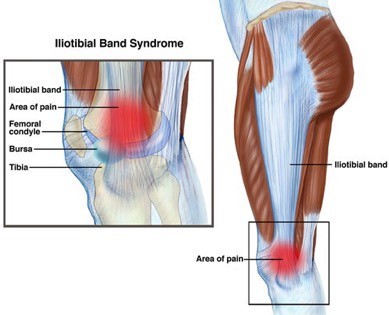Iliotibial band syndrome (ITBS) is one of the most common causes of knee pain, particularly in individuals involved in endurance sports or repetitive activities. Individuals who spend long periods of time in prolonged positions and individuals who quickly start a new exercise regimen without proper warm-up or preparation are also more likely to have ITBS. ITBS is typically managed conservatively through physical therapy and temporary activity modification. Iliotibial band syndrome (ITBS) occurs when excessive irritation causes pain at the outside (or lateral) part of the knee. The iliotibial band (ITB) is a type of soft tissue that runs along the side of the thigh from the pelvis to the knee. As it approaches the knee, its shape thickens as it crosses a prominent area of the thigh (femur) bone, called the lateral femoral condyle. Near the pelvis, it attaches to 2 important hip muscles, the tensor fascia latae (TFL) and the gluteus maximus.
Irritation and inflammation arise from friction between the ITB and underlying structures when an individual moves through repetitive straightening (extension) and bending (flexion) of the knee. Typically, ITBS pain occurs with overuse during repetitive activities such as running and cycling. ITBS can also result from poor alignment and/or muscular control of the lower body.
With ITBS, you may experience:
